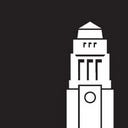Celebrating Hobbit Day: What J.R.R Tolkien did for Leeds — and what Yorkshire did for him
Some 83 years after J.R.R Tolkien’s “The Hobbit” was first published, Hobbit Day (22nd September), celebrates not just the author’s globally loved work and the magical world he created, but also the birthdays of some of his most famous characters, Bilbo and Frodo Baggins.
Tolkien, however, didn’t spend all his time in the fantasy world of The Shire; he spent five years working at the University of Leeds, where he first established his career in academia and found plenty of inspiration for his seminal work.
It is thought that The Shire and Middle Earth were influenced by Yorkshire scenery, and Tolkien even includes fabricated words rooted in Yorkshire dialect.
“Tolkien made up the word bewuthered, but it was clearly inspired by the Yorkshire dialect word to whither”, said Dr Alaric Hall, Lecturer of Medieval Literature in the Leeds’ School of English.
“It’s a nice little bit of Yorkshire in The Hobbit.”
Another example of the influence Yorkshire had on Tolkien’s writing is shown in his well-known tale of Beren and Lúthien. It is said to be written after Tolkien was inspired by his wife dancing and singing for him in a meadow near Roos in East Yorkshire.
Tolkien began working at the University of Leeds as a Reader in the 1920s, before quickly progressing to Professor. Tolkien initially helped expand the linguistic side of the syllabus for the School of English, but he ended up leaving a lasting mark on the school. Tolkien established the School as a UK leader in Old Icelandic language and literature. He was also actively involved with University life and wrote mythical poetry for the student newspaper, The Gryphon.
In 1922, Tolkien published in Middle English ‘The Clerke’s Compleinte’, a parody of the beginning of the Canterbury Tales, which Leeds’ Dr Hall has since translated. Set in autumn, instead of the traditional spring, Dr Hall says Tolkien depicts the beginning of the academic year in Leeds where “Everybody wants to do subjects like chemistry and medicine.” Dr Hall said the poem’s protagonist doesn’t recruit enough students for his philology course, meaning he isn’t bringing in enough income in fees — so he is thrown out.
Within the opening lines of the poem, “misty, black clouds, mixed with smoke, blind the eyes and choke the throats” Tolkien’s “discontent with the northern climate” is revealed, Dr Hall highlights.
Leaving Leeds in 1925 to become Professor of Anglo-Saxon at Oxford, he took with him fond memories of his time in the city.
The University’s Special Collections contains archives of Tolkien’s letters, including a letter to Arthur Ransome in which Tolkien wrote, “I was devoted to the University of Leeds, which was very good to me, and to the students, whom I left with regret.”
In the letter, Tolkien also highlighted his concerns for the book, revealing “sales are not great”, after the initial publication in 1937. He even shared his doubts that it would not be reprinted.
Despite these initial worries, The Hobbit has since sold 150 million copies, and a first edition still forms part of the University’s Special Collections. The Hobbit and The Lord of the Rings have since been made into globally successful films, TV series, stage productions, and radio adaptations.
In 2012, the University of Leeds unveiled a commemorative blue plaque on Tolkien’s former family home on 2 Darnley Road in North Leeds, in collaboration with Leeds Civic Society and The Tolkien Society. This is where Tolkien lived between 1924 and 1925 with his family.
